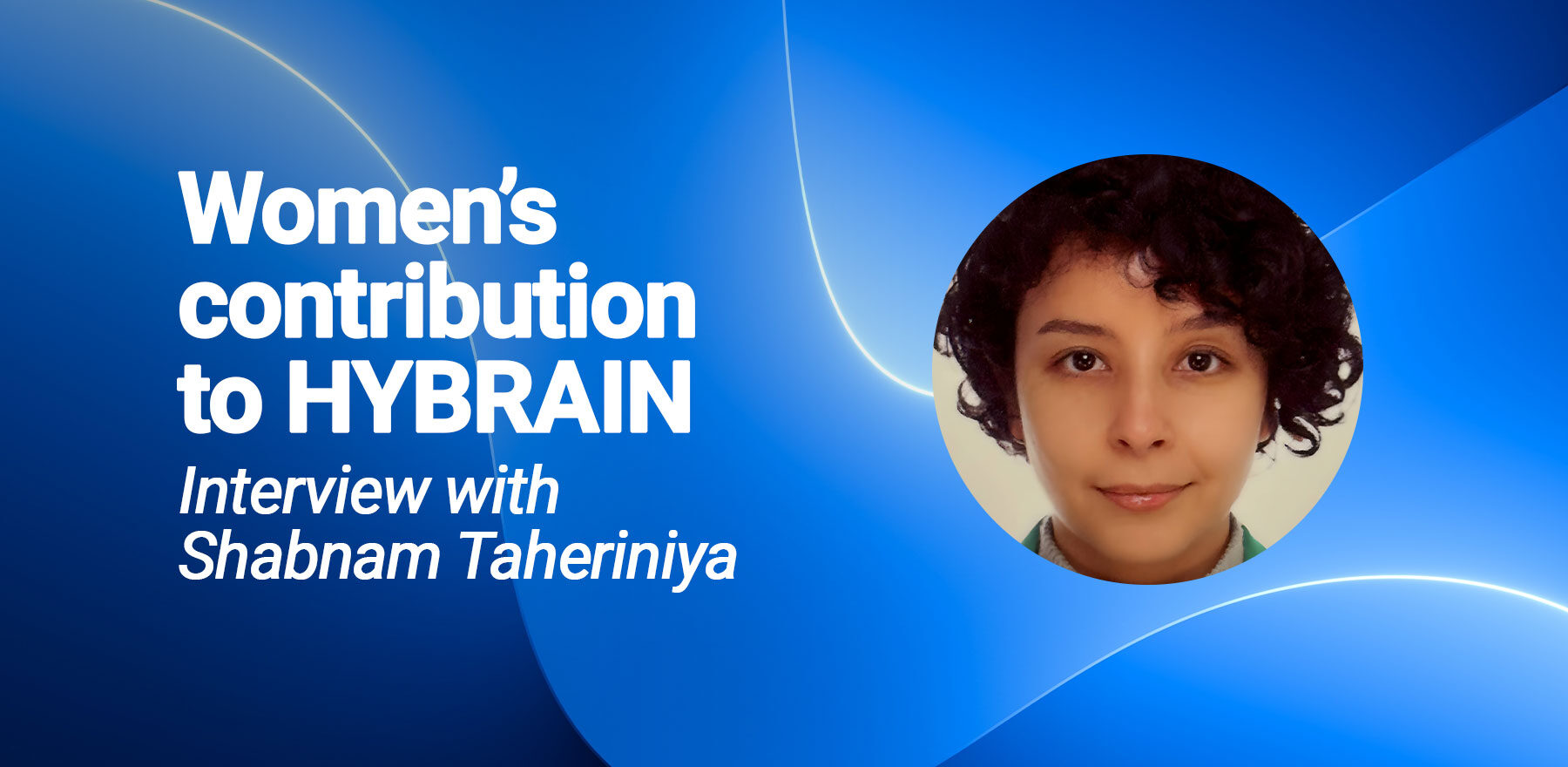Highlighting women’s contribution to the HYBRAIN project – Interview with Shabnam Taheriniya

Interview with Shabnam Taheriniya, Post-doc research associate at the Kirchhoff-Institut für Physik-Heidelberg University
Can you talk a little bit about your work as a researcher in your organisation?
A major part of my work entails planning and executing tasks for the optimal completion of work activities in the HYBRAIN project. With a background in material physics and expertise in scanning/transmission electron microscopy, I provide insight into how microstructural features can serve to realise desirable outcomes in various activities of the project.
Can you share with us the story/reason that led you to decide to become a researcher?
I find great satisfaction in touching the fabric of the universe through gaining knowledge and by doing research, I get to be part of a higher purpose which motivates me to be a better version of myself.
What are the domains that your research is focusing on?
Mostly, my research is focused on the development and optimisation of photonic convolution processors using silicon photonic matrixes. This, together with tunable phase change materials, makes for improved performance in edge computing.
Why did you decide to focus on these domains, what do you like about them?
Given my current field of expertise, which seems rather foreign to concepts such as AI and edge computing, I chose to focus on such domains due to their inevitable relevance to all aspects of human life in the near future. One other reason was to unlock new dimensions in my skill set by focusing on subjects that challenge and excite me at the same time.
Why did you decide to work on HYBRAIN?
The multilateral approach used in HYBRAIN to achieve increased efficiency in edge computing provides promising results and might even lead to unexpected discoveries based on the synergetic effect of novel techniques.
About your work in HYBRAIN
What are you working on in HYBRAIN?
Development and improvement of tunable photonic matrixes based on phase change materials.
Can you provide more details on these activities for our readers, what is it all about?
The design of photonic convolution processors constitutes a step-by-step process, with the main silicon-based structure in its core. The preliminary design is fabricated based on goal-oriented simulations and is tested for optimum performance. The photonic matrix will be further equipped with either electro-optic modulators or phase change materials (PCMs) to offer different types of tenability. The fine tuning and training of such PCM-based brain-inspired photonic networks is carried out using an out-of-plane laser switching setup followed by an in-depth microstructure analysis via transmission electron microscopy.
What is your specific personal contribution to these activities?
Aside from the planning and execution of lab-based tasks, I keep apprised of developments in the field to perform as a proper catalyst in the team. My personal contribution also comes from my gradual bonding to the project and yields several approaches to resolving the problem at hand.
What do you like about the HYBRAIN project?
The diversity of applied techniques, the envisioned unity of different platforms, and the vast probable applications of the outcome.
More specifically, what do you like about working on HYBRAIN?
The team, the relevance to edge computing and how it might affect the performance of AI by overcoming the challenges currently hindering its improvement and development.
Your personal insights
The HYBRAIN technology will enable various innovative AI/Edge Computing applications across the health, automotive, cybersecurity, climate change domains and more. Personally, what is the potential application for the HYBRAIN technology that excites you the most?
In addition to major contributions to the health and automotive industries, the application of AI/edge computing in cybersecurity excites me the most, as it has a detrimental role in the proper execution of all other branches of AI in every aspect of human life. One other exciting outcome is how it might serve to expand carbon-based life throughout the galaxy.
In your opinion, why should AI and Edge Computing researchers pay attention to the HYBRAIN technology?
Due to the multilateral approach to problem-solving and the promising results thus far.
In your opinion, why should AI and Edge Computing organisations pay attention to the HYBRAIN technology?
By paying attention in the form of communication and proper support, such companies will benefit from the outcome of HYBRAIN project and related technologies.
If HYBRAIN is successful in creating its technology, how do you think the AI and Edge Computing domains will change as a result of the uptake of HYBRAIN’s technology?
The successful completion of HYBRAIN will yield more positive feedback by eliminating one of the key weaknesses in the field of AI and edge computing. This in turn will encourage extended research on the advancement of such technologies.
What would be your advice for young women wishing to pursue their passion for AI, Edge Computing and other STEM domains with a research career?
This journey will quench your curiosity, and no challenge will question your integrity, if you concentrate only on getting to know the subject.